As I swung my leg over the saddle of a former Navajo mustang and ventured into the Mojave Desert a few months ago, I became one of the more than 1 million annual visitors to Joshua Tree National Park, located in Southern California.
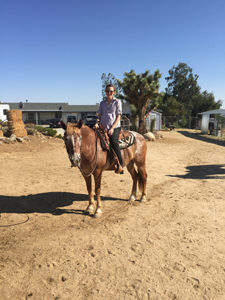
My guide and I galloped through dry desert washes and scaled more than 1,000 feet in elevation up the foothills to the breathtaking views awaiting us at the top. The early morning sun signaled the triple digit temperatures later to come that day.
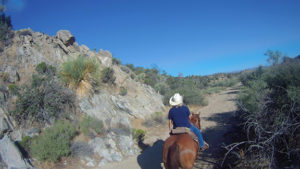
My guide told several stories of seeing UFOs and mountain lions in the park. Her stories of the latter had me looking over my shoulder as we entered a canyon where there were fresh tracks from a mountain lion, which is the second largest wildcat in the Western Hemisphere that can run up to 50 mph and jump 30 feet in one leap. Oh, and did I mention it stalks its prey before killing it?
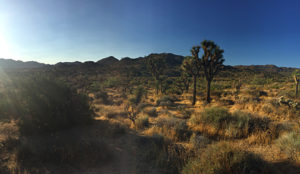
Thankfully the only wildlife we saw were quail, a snake and plenty of jackrabbits. Also plentiful were the infamous Joshua Trees, which according to legend, were named by Mormon pioneers passing through mid-1800s who thought they resembled Joshua reaching toward heaven.
Even though I only saw a fraction of the park’s almost 800,000 acres, I quickly understood how the park has enchanted people for thousands of years, including the Serrano and Cahuilla Indians.
Originating from the Uto-Aztecan language family of Indians, the Serrano and Cahuilla Indians used Joshua Tree as a seasonal home in the winter and retreated to the cooler San Bernardino Mountains in the scorching summer months. As skilled hunters and gatherers, the bulk of their diet was from more than 100 varieties of plants, as well as acorns, mesquite beans, pine nuts, and small animals like rabbits, rodents, snakes and lizards. The Serrano and Cahuilla people also used the desert plants for medicines, ceremonies and in their expert weavings.
With more than 60 words to describe relationships and relatives, the tribes were family oriented and required intermarriage between the two moieties (groups) — Tukum (“Wildcats”) and Wahilyam (“Coyotes”) — that were based on male family lineage. Their remote desert location shielded the group of 3,000 Serranos and Cahuillas from the Spanish, who forced many other tribes into missions in the mid-1700s along the California coast.
Even though Spanish control of California ended with the Mexican War in the early 1800s, by the end of the 19th century, sadly, only about 25 percent of California’s Indian population survived.
Other changes devastated the Serrano and Cahuilla people. Both smallpox and the gold rush hit the area in the 1860s. When the mines dried up, cattlemen and homesteaders replaced the miners. The Southern Pacific Railway made inroads in the area in the late 1870s; and with the advent of air-conditioning and the car at the turn of the century, more settlers and vacationers flocked into the area.
By 1912, the Serrano and Cahuilla people had permanently left their lands in Joshua Tree. Today, nearly a dozen reservations are the territory of the tribes and bands of the Cahuilla and Serrano people, including the Agua Caliente Band of Cahuilla Indians, the San Manuel Band of Mission Indians, and Morongo Band of Mission Indians, near present day Palm Springs.
The Serranos’ and Cahuillas’ history with Joshua Tree was as fascinating to learn about as the park was captivating to visit. Joshua Tree is definitely on my “must visit again” list.
(Editor’s note: This is Casey’s fifth segment in the “Hoof Beats” blog series, which describes her travels in Indian Country on horseback.)
References:
- “Joshua Tree: The Complete Guide” by James Kaiser
- Tiller’s Guide to Indian Country
- http://www.desertsun.com/story/life/2014/08/24/southern-pacific-railroad-history-coachella-valley/14446763/
- https://www.nps.gov/jotr/learn/nature/jtrees.htm
Advertisement Disclaimer: The YouTube account for Travois, including this video, may contain advertisements for third parties. Travois does not endorse third parties in exchange for advertising and Travois is not responsible for the content of the advertisements.
Read more:


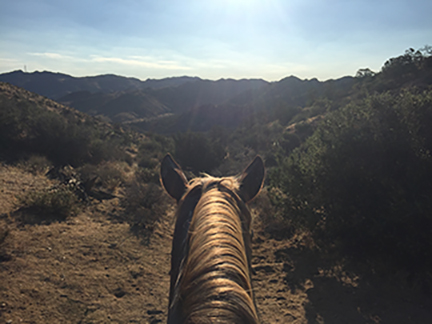
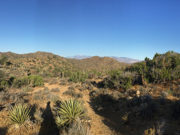
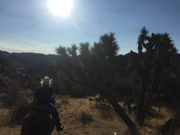
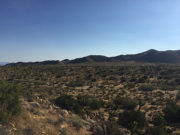
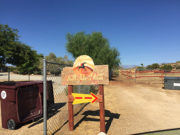
Great music, awesome country and the camera work on the galloping mount got balance and control.
Riding horses is excellent therapy and the get away from office to nature is powerful.
Thanks for reading, Joe. It was a great ride!